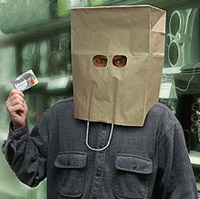
|
 |
 |
 Business News | January 2005 Business News | January 2005  
Most Id Theft Takes Place Offline
 Mindy Fetterman - USA Today Mindy Fetterman - USA Today

Identity theft is less likely to happen online than through traditional means, like losing or having your wallet stolen, and when the identity of the thief is known, it's more likely to be one of your relatives.

 There were 9.3 million new victims of identity fraud in 2004, or 4.3% of the U.S. adult population, according to the 2005 Identity Fraud Survey Report. It was released by the Council of Better Business Bureaus and Javelin Strategy & Research. There were 9.3 million new victims of identity fraud in 2004, or 4.3% of the U.S. adult population, according to the 2005 Identity Fraud Survey Report. It was released by the Council of Better Business Bureaus and Javelin Strategy & Research.

The survey found:
• Computer crimes accounted for 11.6% of identity theft in 2004, vs. 68% from paper sources.
• The average loss for online identity theft was $551, vs. $4,543 from paper.
• Family members, friends and neighbors make up half of all known identity thieves.

"Computer theft is way down the list," says James Van Dyke of Javelin Strategy in Pleasanton, Calif. Doing financial transactions via computer worries Americans, he says, because "It's the great unknown. But it's not where your primary risk from fraud is."

Computer identity theft can occur when fake e-mails claiming to be from your bank or credit card company warn you there has been a problem with your account and you need to log on to the attached link.

"This 'phishing' can look like the real thing, but it's sending you to a bogus site. You won't know that you're e-mailing a teenager's bedroom somewhere with your private information," Van Dyke says.

Only 2.2% of identity fraud comes from viruses or hackers; 1.7% from fake e-mails.

The biggest risk for identity fraud is from the old-fashioned theft of your wallet or paper records from your trash. And from people who know you. "People who are close to you can set up known accounts and have the information sent to a new address. So the fraud goes on longer and is harder to discover," Van Dyke says.

Hispanics and African-Americans are twice as likely as Asians or whites to experience the most serious fraud where a thief uses information to set up new bank or credit card accounts.

The BBB and Javelin Strategy did a telephone survey of 4,000 Americans and found 509 who had suffered identity theft. They then questioned those people extensively.

The independent survey was paid for by a group of credit card companies and banks, including CheckFree Services, Visa and Wells Fargo Bank. | 
 | |
 |



